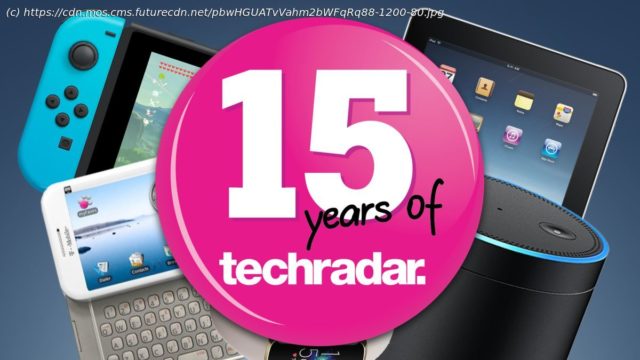The last 15 years have seen some groundbreaking developments in tech, from smartphones to drones to video doorbells, and we’ve been here to cover them all.
TechRadar turns 15, a milestone we’re pretty jazzed to have hit. We launched in January 2008, having previously operated under the banner of tech.co.uk, which was one of the first consumer tech sites to brave the world of online publication in the UK.
Now, we’re rapidly approaching the time when we’ll be starting to hire people who weren’t born when the website launched, which is fun – if not a little terrifying.
Naturally, we’ve seen a lot of change in that decade and a half. TechRadar-proper might have narrowly missed the launch of the first iPhone in 2007, but we’ve covered every iPhone launch since. We’ve scratched our chins at each year’s weirdest CES revelations, eye-rolled at the latest ‘innovations’ that never took off, and spread our wings to cover an increasingly wide range of gadgets and services.
What better way to celebrate our anniversary than a look back at the tech moments that helped to make us? Here’s our pick of the biggest tech developments from each year of our existence, and why the TechRadar team thinks they mattered.
“Originally invented to take on the once-mighty BlackBerry, Android turned quickly to face the iPhone, its longtime rival,” writes Philip Berne, our US Mobile Editor.
“Always the more versatile system, Android now has been on everything from keyboard phones to flat phones to folding phones and more. Whether it’s Google’s own version, enhanced skins from Samsung, or even Google-free Android from Huawei, the mobile OS is ubiquitous. If you see an amazing new non-Apple mobile device, chances are it’s running Android.”
My earliest memories of WhatsApp involve desperate pleas, as an iPhone user, to my Blackberry-touting school friends to ditch BBM so I didn’t suffer so much fear of missing out. Alex Walker-Todd, our Senior Phones Editor remembers it more for its lasting impact on communications, though: “Long before it was acquired by Facebook (now Meta) for $22bn, WhatsApp proved itself as the pre-eminent cross-platform messaging app; finding its first foothold on iPhone and growing to connect users across BlackBerry, Android and beyond, with a growing number of rich chat and media features.
“Nowadays, it boasts a user base of more than two billion, and retains its position as one of the most popular messaging apps in the world.”
“The iPad was conceived before the original iPhone, as Apple had been trying to add video to its devices ever since the classic iPod,” says Philip Berne “With the iPad, Apple finally created the perfect portable video-watching machine, and in doing so stumbled upon a viable laptop replacement as well. Today’s iPads are powerhouse tablets, but even the entry-level iPad remembers its capable, humble roots.”
2010 was a pretty huge year for tech in general and gets a number of honorable mentions. We saw the launch of Netflix’s online platform, heralding a new age of streaming, and with it, a sea change in the way we consume shows and films. That year also saw the earliest prototype of the Oculus Rift, taking VR out of science fiction and into consumers’ hands for the first time, the arrival of Instagram, and if that wasn’t enough, we also saw the first proper air fryer, from Philips. So no big deal.
“Chromebooks have been a slow build,” writes our US Computing Editor, John Loeffler, “but Google’s low-cost successors to the netbook have turned out to be among the most essential devices in education and everyday computing, coming at a remarkably low cost for consumers. Where else are you going to find a $99 computer?”
On a sadder note, Apple CEO and co-founder Steve Jobs passed away in 2011, just a day after the announcement of the iPhone 4S, which was the first iPhone to hit the shelves without the man himself at the helm.
Becky Scarrott, Senior Audio Staff Writer, says: “In its simplest terms, Dolby Atmos adds overhead height channels to the recording and decoding process of music production, thus allowing sound designers to place sonic articles as ‘objects’ in a three-dimensional space for a more realistic audio experience.
“Since its 2012 release, this end-to-end change has been adopted by Apple Music for its splendid head-tracked spatial audio, as well as by Tidal, in its HiFi Plus tier. Streaming platforms such Netflix and Disney Plus now also offer Dolby Atmos content – and with even inexpensive tablets now bearing the Atmos badge, you don’t have to spend a fortune to get it.
“For me, the beauty of Atmos is that while the number and placement of speakers in your hardware (whether we’re talking a surround-sound speaker package, soundbar, headphones, tablet, or your local cinema) will vary dramatically, Atmos will scale with the setup regardless. If your file says Dolby Atmos, and your device supports Dolby Atmos, you’re all set for incredibly persuasive, spine-tinglingly exciting, all-around-you sound.






